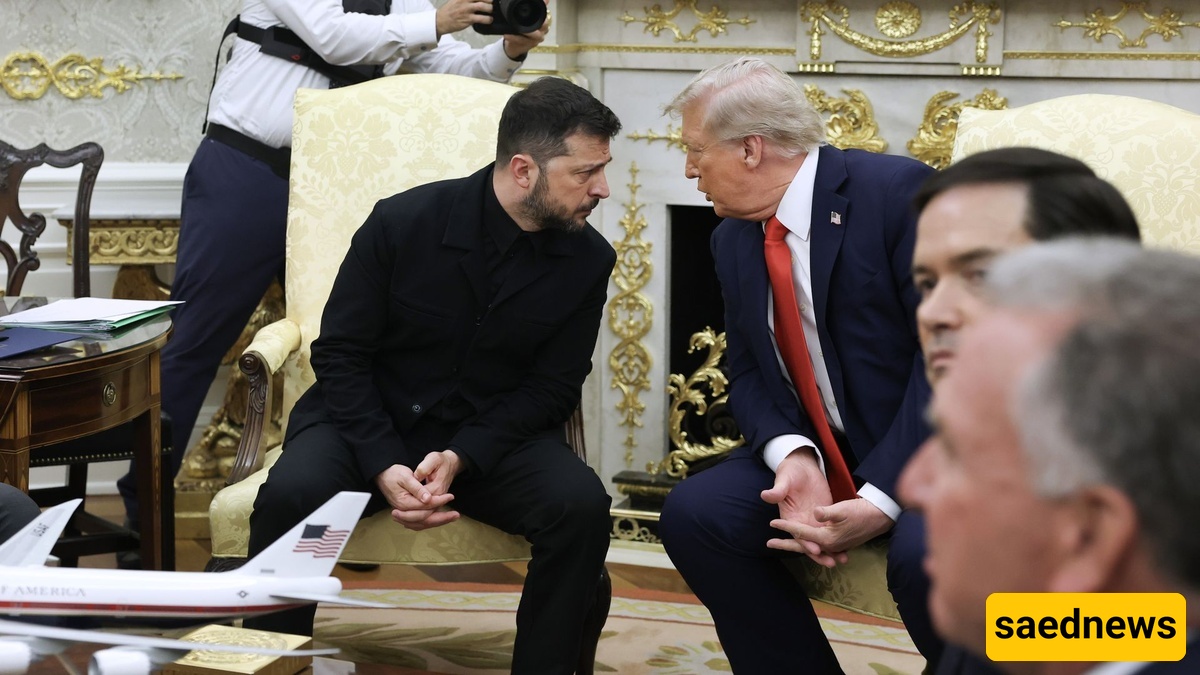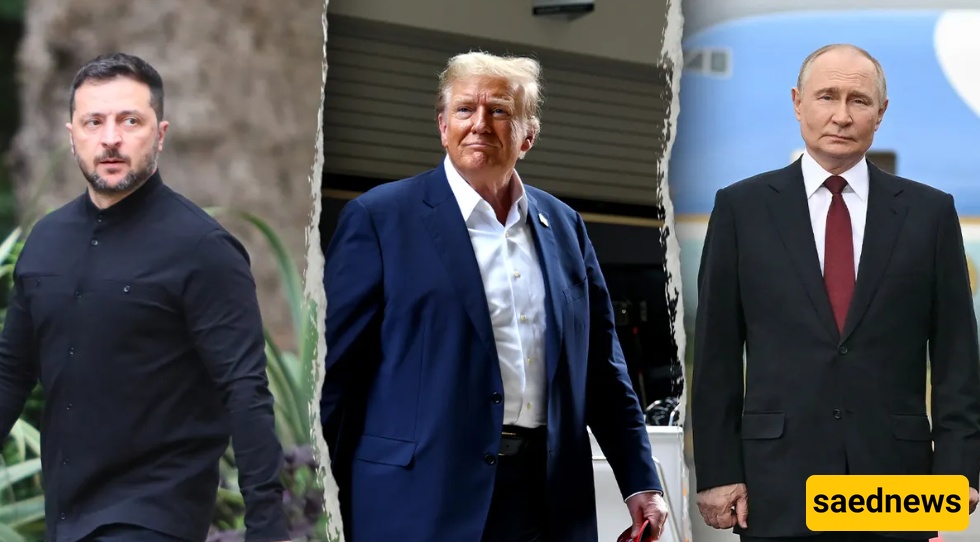SAEDNEWS: The potential meeting between Vladimir Putin and Volodymyr Zelensky, which Donald Trump is seriously pursuing, might initially seem like a turning point in the Ukraine war, but in practice, significant and complex obstacles stand in the way of its realization.

According to SaedNews, citing Axios, the reality is that Putin has shown no clear commitment to direct talks with Zelensky. His silence or ambiguity is more a diplomatic tactic to buy time and increase bargaining power than a genuine desire for peace. From Moscow’s perspective, prolonging talks allows Russia to gain further advances on the battlefield while presenting itself diplomatically as a party seeking negotiation. This strategy lets Putin gradually emerge from international isolation without conceding real compromises, similar to the Alaska meeting, which provided a diplomatic platform without substantial concessions to the West or Ukraine.

On the other hand, Ukraine faces serious limitations. Territorial integrity is an absolute red line for Kyiv; neither the government nor public opinion will accept any territorial compromise. The country’s constitution explicitly prohibits any ceding of Ukrainian land except via a national referendum, which is practically impossible during wartime. Meanwhile, ideas suggested by Trump regarding “territorial swaps” or Ukrainian withdrawal from some areas face strong resistance, and proposing them could cost Zelensky his political base. These legal and political constraints leave Ukraine with minimal flexibility in potential negotiations, reducing the likelihood of a successful direct meeting.
Security guarantees are another critical issue. Ukraine expects the West and the U.S. to make binding commitments comparable to NATO’s Article 5, as any agreement without enforceable military backing would be essentially worthless. However, Trump has explicitly opposed sending U.S. ground troops to Ukraine and has only suggested air support at best. This level of commitment is insufficient for Kyiv and European allies. Meanwhile, Russia strongly opposes any NATO military presence in Ukraine, creating a structural deadlock. Europeans are also skeptical of Washington’s vague promises and believe any agreement is valid only if it includes clear and enforceable guarantees, not merely U.S. verbal commitments or unilateral initiatives.
Organizing the meeting itself also faces many uncertainties. Although Trump wants to hold the meeting by the end of summer, the Kremlin has yet to announce a date or confirm a location. Trump suggested Budapest, while Europeans consider Geneva more suitable, and Moscow has rejected both. Past experience with the Alaska meeting has further fueled doubts, as Zelensky was not invited, and negotiations occurred only between Trump and Putin. This raises concerns about Ukraine being sidelined in key decision-making, which Kyiv cannot accept.
Broadly, these efforts highlight a rift between the U.S. and Europe. Trump has repeatedly expressed doubts about Ukraine’s future in NATO and has sometimes leaned toward positions closer to Russia. This approach does not align with European leaders, who emphasize strengthening support for Ukraine and maintaining Western unity. The risk is that unilateral concessions from the U.S. to Russia could weaken transatlantic cohesion, emboldening Putin to continue his military campaign. High-level meetings also provide Putin with international legitimacy, effectively ending his political isolation without delivering tangible gains to Ukraine.
Many experts have warned against Trump’s approach. His desire for rapid, high-profile agreements could result in a “peace” that offers no real guarantee for Ukraine’s security or future. The Alaska meeting demonstrated that Putin can exploit diplomatic platforms to strengthen his position without paying serious costs. Experts stress that organizing the meeting is the simplest part; the real challenge lies in preparing the agenda and setting red lines beforehand. Without this, any direct meeting between Putin and Zelensky is likely to fail or produce a weak, fragile agreement.
In summary, obstacles to a Putin–Zelensky meeting are so serious that short-term success seems unlikely. Putin’s tactical delay, Ukraine’s constitutional limitations, lack of firm security guarantees, disagreement over location and framework, U.S.–Europe divergence, and the risk of superficial agreements all combine to delay or undermine such a meeting. Real progress is only possible if Ukraine participates actively and equally, with agreements backed by legal and security guarantees; otherwise, the outcome will merely reinforce Russia’s gains and weaken Ukraine and its Western allies.

